Canning applesauce is the perfect way to preserve a bumper crop of apples.
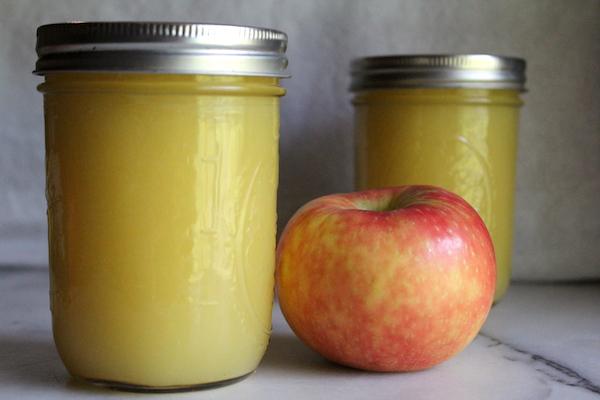
Applesauce is one of the easiest ways to preserve apples at home and a perfect place to start for the beginning canner. Apples are naturally high acid, so they are canned in a water bath canner. Just about anything goes when you’re canning applesauce at home.
Want chunky applesauce? No problem!
Leave the peels on? Yup, that works too.
Sugar-free or maple sweetened? Do it!
It’s hard to go wrong canning applesauce at home.
The first step to canning applesauce is actually making applesauce. Start by peeling and coring enough apples to fill a large stockpot.
I’m pretty quick with a paring knife and it only takes me a few minutes to peel, core, and slice a full pot of apples for homemade applesauce.
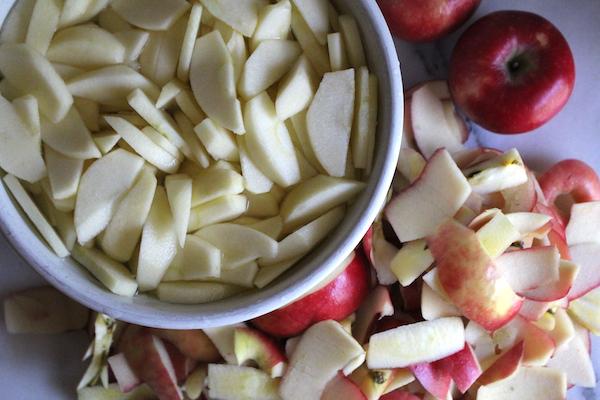
Still, If I’m making an absurdly large batch when our summer apples come ripe in July, I’ll still opt for making applesauce with a food mill. The machine separates the peels, cores, and seeds from cooked applesauce, saving a lot of time.
If you have a Kitchenaid food strainer attachment, hand crank food mill, or chinois sieve, simply coarsely chop the apples and add them to the pot.
Once they’re soft, run them through the food strainer to remove the unwanted seeds/peels/cores before returning the cooked applesauce to the pot for canning.
Keep in mind that while using a food strainer/mill saves time, it limits you to smooth applesauce. That may not be a bad thing if you like perfectly smooth applesauce without apple chunks.
For chunky applesauce, you’ll have to peel and core the apples by hand instead.
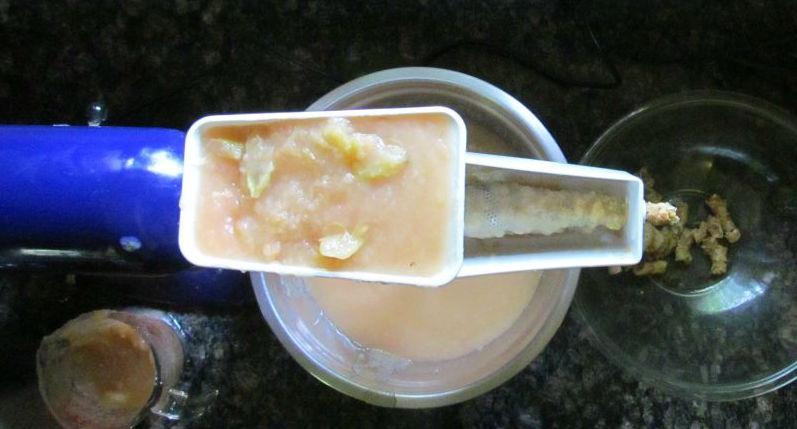
Either way, cored or not, whichever you decide based on the equipment you have on hand.
Add a bit of water to the apples to prevent them from scorching before they release a bit of juice, and bring the pot to a boil. Some people choose to add apple juice or apple cider instead of water, which adds a bit of sweetness and flavor to the finished applesauce (without adding cane sugar).
The water will cook off as the applesauce cooks, provided you’ve only added a small amount (1/2 cup to a cup per large pot of sauce). If you add too much, you’ll be boiling the apples and the sauce will separate, so stick to just enough to get the sauce going.
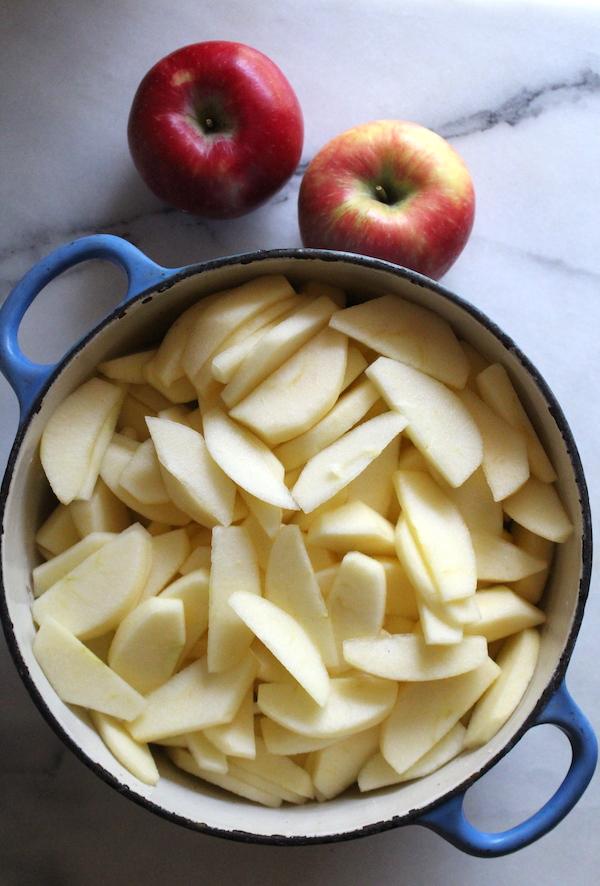
Cover, and cook until the apples disintegrate, stirring occasionally.
If you don’t have a food mill, process the apples with an immersion blender for smooth applesauce. For a chunkier sauce, you can just stir vigorously with a wooden spoon or stick to a few quick mashes with a potato masher.
The finished texture is completely up to you, and canning chunky applesauce works just as well as perfectly smooth applesauce.
Read more : What Does It Mean When You Dream Of A Wolf
At this point, taste your sauce.
Most modern apple varieties are sweet enough without any added sugar. Apples like Honeycrisp are the perfect balance of sweet, with just enough acidity to make an exceptional sauce with no other ingredients.
Wild apples and antique varieties may require a bit of added sugar to balance out tartness or acidity.
If you’re adding seasoning, I’d suggest seasoning lightly. Spices tend to intensify during storage, and a hint of cinnamon now will taste quite a bit stronger in a few months.
Generally, I don’t season applesauce before canning. I want the finished product to be as versatile as possible, and dusting a little cinnamon on top of a bowl of sauce works well enough.
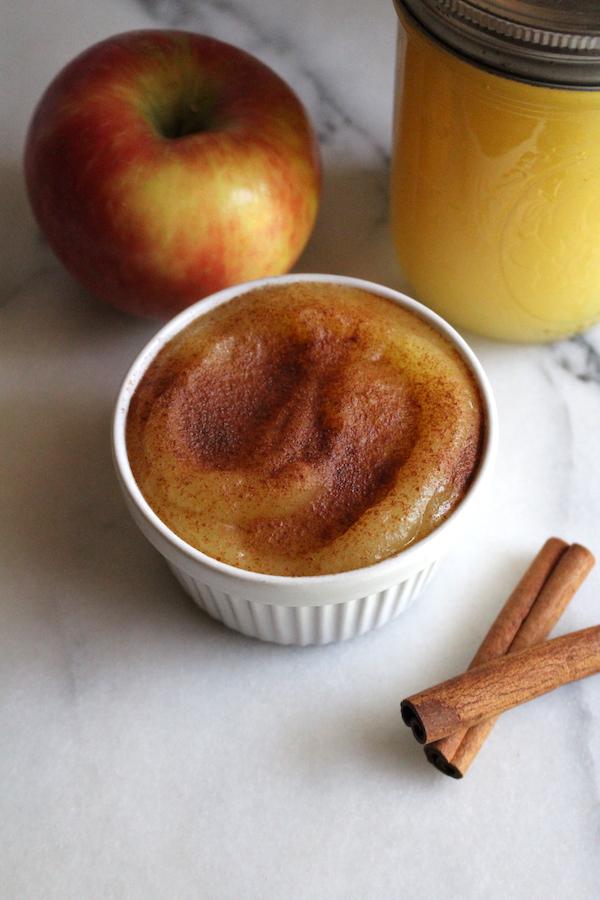
Canning Applesauce Yield
It takes about 1 to 1 1/2 pounds of whole apples to make a pint of sauce, depending on the apples and how efficient you are at peeling them.
That translates to 5 to 7 lbs of apples for a 4 pint batch.
Canning Jar Size for Applesauce
Applesauce may be canned in quarter pint, half-pint, pint, and quart jars. Most commonly, it’s canned in pint or quart jars.
If canning in smaller jars, follow the timetables for pint jars.
Canning applesauce in half-gallon jars was practiced historically, but it’s not currently endorsed by the USDA.
The jar is too large to ensure adequate heating all the way through, and air bubbles can be a serious problem with so much sauce in a jar.
The only foods currently approved for half-gallon jars are juices from high acid fruits, such as apple juice or grape juice.
Applesauce Recipe for Canning
Personally, I don’t follow a recipe when I’m making and canning applesauce. Cook apples, make the sauce, and can it. Simple enough.
I make my applesauce without added sugar as well. Recipes in canning books often have quite a bit of added sugar, which is not strictly necessary for preservation. Feel free to modify their recipes to leave it out.
If you’re the type that wants or needs a specific applesauce recipe for canning, I have a few options for you:
- Ball Complete Book of Home Preserving ~ Their basic applesauce canning recipe starts with 12 lbs whole apples. They cook it into a sauce and add 3 cups sugar and 1/4 cup of lemon juice. The lemon juice helps add some tartness to balance out all that added sugar. Makes about 8 pints or 4 quarts.
- The All-New Ball Book of Canning and Preserving ~ This updated version from ball dramatically reduces the sugar in canning recipes, but the results are still plenty sweet. They start with 6 lbs apples, 2/3 cup sugar, 1/2 cup water, and 1/2 cup lemon juice. Makes 4 pints.
- Naturally Sweet Food in Jars ~ Their recipe for chunky spiced applesauce starts with 5 lbs apples (as purchased). They’re peeled and cored, then cooked with 1/2 cup apple juice or cider, two star anise, and two cinnamon sticks until they completely fall apart (about 20 min). The whole spices are removed and then she stirs in 1 tsp nutmeg and 1/2 tsp cloves. The resulting sauce is a very dark brown and full of spicy flavors. Makes four pints.
- Blue Ribbon Preserves ~ They offer four different applesauce canning recipes, but they’re all quite similar. Their basic recipe starts with 7 lbs apples, 2 cups apple juice, 2 cups sugar, and 2 tablespoons lemon juice. Makes 4 pints. (Be aware that when adding that much liquid at the start, the applesauce may separate, so I don’t recommend it!)
- Their spiced applesauce recipe then substitutes brown sugar for half the sugar (1 cup) and adds 1 tsp cinnamon and 1/2 tsp nutmeg.
- They also have apricot applesauce and cranberry applesauce, which start with 4 cups chopped apples and 4 cups of either cranberries or apricots. Both use 1 1/2 to 2 cups sugar and 2 cups water (again, I’d suggest no more than 1/2 to 1 cup liquid).
How to Can Applesauce
Canning applesauce is the same regardless of your choice of spices, sugar, lemon juice, and just about any other flavorings you can think of.
Make the applesauce as you otherwise would, following your favorite recipe. Then decide if you’re going to can applesauce in a water bath canner, or a pressure canner.
Water Bath Canning Applesauce
Prepare a water bath canner before you start making the applesauce. The canner will be loaded with jars of hot packed applesauce, so the water should be barely simmering (about 180 degrees F).
If you’re not familiar with water bath canning, I’d suggest reading this beginner’s guide to water bath canning before you get started.
Ladle prepared applesauce into canning jars, leaving 1/2 inch headspace. Seal with 2 part canning lids to finger tight.
Use a jar lifter to load the applesauce jars into the simmering water bath canner. Turn up the heat and bring the canner to a full boil, then start the timer.
The time for water bath canning applesauce depends on your altitude. If you’re below 1000 feet in elevation, the time is 15 minutes for pints and 20 minutes for quarts.
Read more : When Is Subnautica 3 Coming Out
At higher elevations, refer to the table below:
Once the canning time has completed, you can simply remove the jars from the water to cool on a towel on the counter.
That said, I’d suggest turning off the canner and allowing the canner to cool for about 5 minutes before removing the applesauce jars. This helps prevent siphoning (or leaking applesauce) from the rapid temperature change as the jars go from boiling to the open air.
Optional, but recommended.
Allow the jars to cool completely (12 to 24 hours), and then check seals. Store any sealed jars in the pantry, and store any unsealed jars in the refrigerator for immediate use.
Properly canned applesauce should maintain quality on the pantry shelf for 12-18 months (and be safe to eat long after that, provided the jars are sealed).
Pressure Canning Applesauce
Apples are perfectly fine for water bath canning, but some people just prefer using a pressure canner. I’ll often use one for canning tomatoes simply because it’s quicker than an otherwise long water bath canning process time.
I also can water for emergencies in a pressure canner, simply because it heats up the house a lot less than two massive stockpots of boiling water. (Though that can also be canned in a water bath.)
If you’re not familiar with pressure canning, please read this beginner’s guide to pressure canning before getting started.
Time and pressure vary based on the jar size, altitude, and type of canner. Refer to the table below for pressure canning times for applesauce:
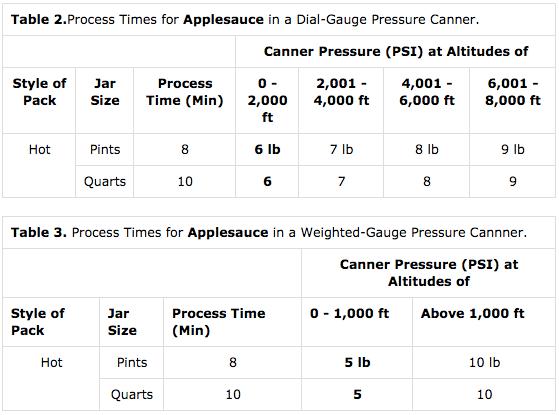
Troubleshooting Home Canned Applesauce
Canning applesauce is pretty straightforward, but that doesn’t mean things can’t go wrong…
Mold inside Applesauce Jars
Mold inside sealed jars is often caused by either underprocessed applesauce or from too much headspace.
Allowing 1 inch of headspace (instead of 1/2 inch) can leave enough space and air inside to allow for mold growth.
Bitter or Astringent Flavors in Applesauce
This can happen as a result of certain types of apples, especially wild apples that sometimes have a higher tannin content. Old fashioned cider apples are often high in tannin & acid too.
Too much cinnamon (or other spices) can also result in bitter flavors as well.
Air Pockets in Canned Applesauce
Be sure to de-bubble the jars to remove air pockets as much as possible. If your apples are underripe, they’ll have extra pectin and may setup into a “jam-like” consistency as soon as it hits the jar.
This can lead to lots of air pockets inside the applesauce.
Applesauce Separation
Adding too much liquid at the start can result in separation. This isn’t necessarily because the liquid is left from the beginning, but more that you’re basically making homemade apple pectin with all that liquid, and it’ll set separately at the bottom of the jar.
When you open the jar, you’ll have a dry-ish applesauce layer for the top 3/4 of the jar…then a strange apple gel layer at the bottom. Stick with no more than 1/2 to 1 cup of liquid, just enough to get the applesauce started cooking.
Apple Canning Recipes
Looking for a few more apple canning recipes?
- Canning Apple Pie Filling
- Canning Apple Slices
- Canning Apple Cider
- Canning Apple Juice
- Canning Apple Butter
- Canning Apple Jam
Ways to Preserve Apples
Canning isn’t the only way to preserve apples!
- How to Make Apple Cider Vinegar
- How to Make Hard Cider
- Homemade Apple Wine
- Cider Syrup (Boiled Cider)
Fall Canning Recipes
I have literally hundreds of canning recipes, so read on friends…
- Canning Pears
- Pear Jam
- Canning Whole Cranberries
- Canning Pumpkin
- Canning Sweet Potatoes
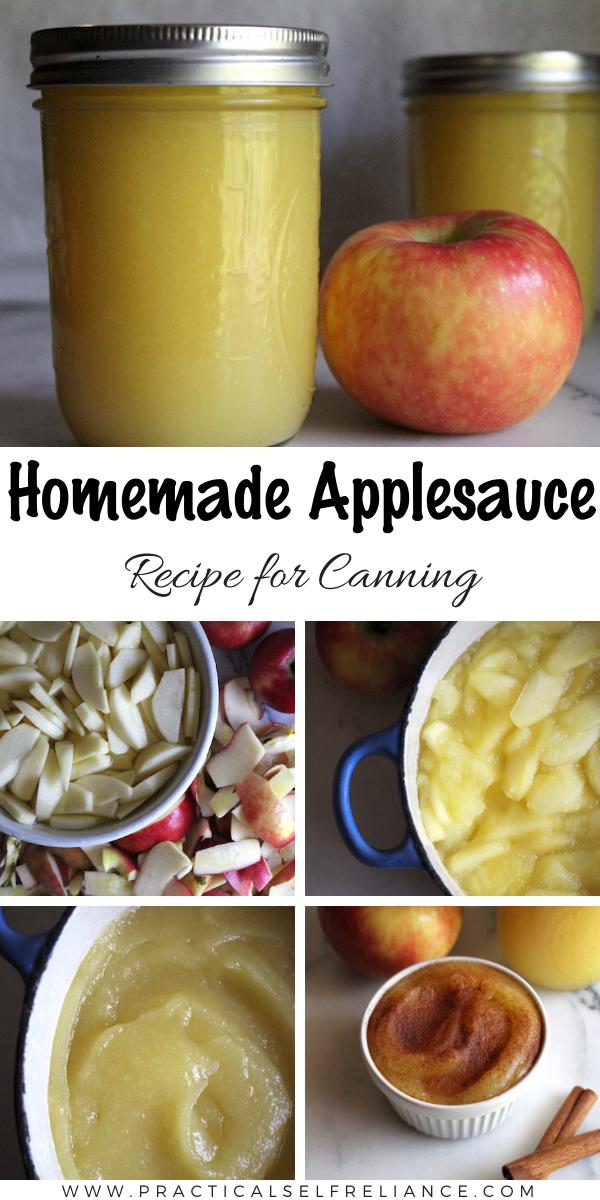
Source: https://t-tees.com
Category: WHEN
